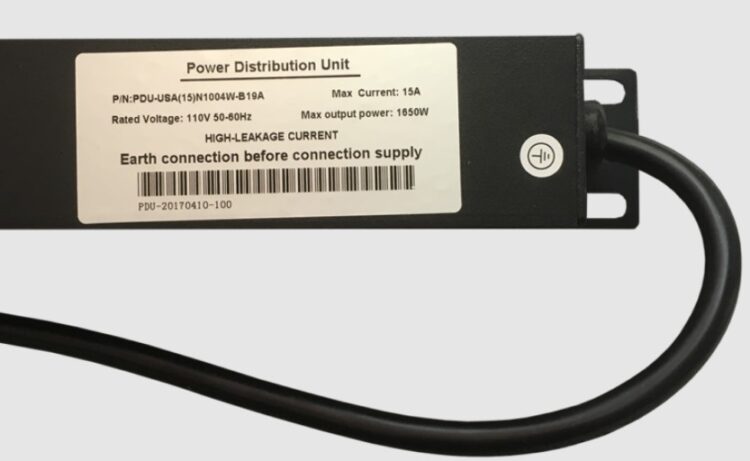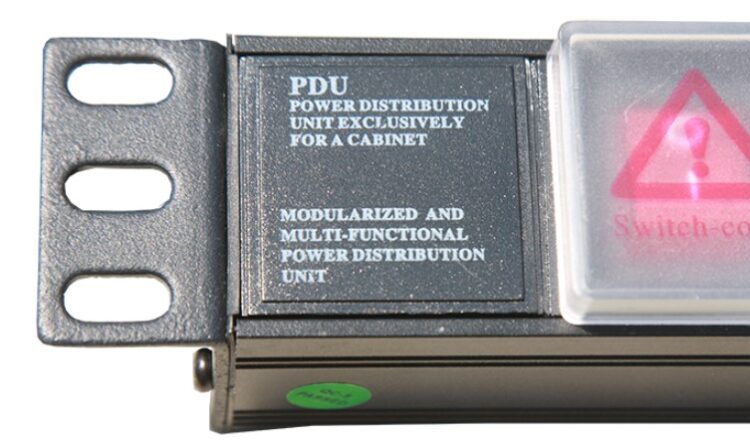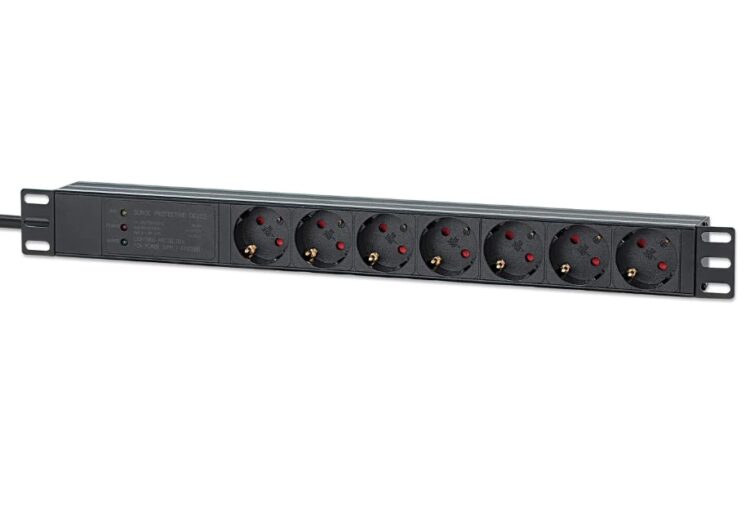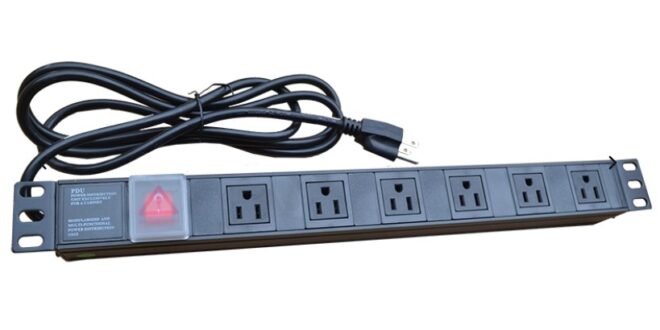Modern IT systems are designed to serve as brains for enterprises and businesses. Still, each component of a network system requires feeding to process data and perform computing tasks. Thus, PDUs are indispensable units for each network system.
PDUs ensure sufficient and uninterruptible energy supply to functioning components, preventing multiple problems. Different types of power supplies are distinguished. Below, we’re going to consider them and outline other features.
Understanding Rack-Mount Power Supplies
First of all, let’s answer the question “What is a rack mount power supply?”. To put it simply, rack-mount power supplies feed electronic devices with a sufficient amount of electricity. Yet, if we look deeper into their functionality, they come as specialized devices designed to convert AC (alternative current) into DC (direct current). Further, they distribute the converted current between all hardware pieces.
Power supplies differ in multiple tech characteristics, such as voltage, the generated energy, throughput, etc. Thus, when arranging an IT system, technicians should calculate the required specs of PDU, judging by the number of components and their power consumption required for smooth operation.

Principle of Operation
Now, let’s go deeper into the process and consider the features of rack PSU operation. To reach the final energy consumer, the current goes through multiple stages:
- AC enters a rack-mounted PSU and is directed to a diode bridge to lower voltage.
- Converted DC is directed to an inverter. Going through the primary and secondary winding, DC continues to be adjusted to the required voltage of the consumer devices.
- Then, it goes to a transformer.
- The chain ends with the diode bridge again, after which DC is ready to be directed to feeding equipment.
This process is needed to convert the current to the required voltage since AC can simply burn IT equipment. Going through power supplies, the current is lowered from 220/380 V (depending on the electricity source) to 5-24 V, depending on hardware demands.
Types of Rack-Mount Power Supplies
Different kinds of devices are distinguished in the industry. The following energy supply types are the most popular in system administration:
- Basic. This is a first-level device that satisfies all the standard requirements set for energy tools. It is usually mounted directly in a server cabinet. It is a cost-effective solution for IT systems.
- Metered. This type of device provides metrics to display instantly when maintaining a server rack system. Such devices are perfect for DC infrastructures disconnected from local networks. They provide wide configuration opportunities.
- Monitored. Such devices come as advanced tools for large-scale IT infrastructures. They provide solutions for remote monitoring of metrics. Note that such options are used at different levels of DC arrangement; these are outlet-level and unit-level options. Extended configurations are available. For instance, users can set an alarm in the case of power breaches.
- Switched. This is the most advanced type of power supply. Besides other functionalities (similar to monitored ones), it allows for turning on and off and rebooting the device remotely. The device is used to control the power supply at different levels of DC infrastructure.
If you need a rack power supply, visit Sysracks. A wide catalog of models of any type and for any system is provided on the website. Skilled managers help select appropriate models.

Advantages of Using Rack-Mount Power Supplies
Now, let’s consider PSU advantages. Such devices are responsible for:
- Smooth and uninterruptible power supply to all components.
- It is guaranteed that all hardware pieces receive the required amount of electricity.
- Protection from breaks and other malfunctions caused by current surges.
- Cost-effectiveness and eco-friendliness. Effective energy allocation without extra use of natural resources.
Installation and Connection
When considering the issue of PSU installation, note that they can be mounted either together with critical IT hardware in one rack/cabinet or in a separate stand. It all depends on the available space and size. When installing the power supply, keep in mind the guide:
- Make sure that it fits the available stand or rack. Measure the width and depth of a furniture piece to fit devices.
- Use nuts and bolts to fasten devices. In most cases, they are screwed to mounting rails.
- Loose rails and match fastening holes to fix hardware.
Consider rack-mount PSU safety by checking whether the stand meets weight characteristics to prevent falling and damage. Besides, timely PSU maintenance helps prolong its operation and eliminate multiple hazards.

Use Cases
The most common rack-mount PSU use cases include:
- data centers
- server rooms
- network switches
- offices and stores.
In other words, PSUs are required everywhere, where IT systems are found since they feed equipment. So, network systems won’t simply run without PSUs.
Technical Specifications
A great variety of models is available on the modern market. Products differ in specs to meet the demands of each consumer. Keep in mind the technical specs of power supplies when selecting a suitable model:
- wattage
- voltage
- efficiency
- extra capabilities.
Tech specs are selected, depending on system requirements. Each system has a unique set of components, which determine their power needs.
Power supply innovations help improve their efficiency, durability, and capabilities thus, the future of power supplies will flourish and please system administrators with more advanced options for DC infrastructures. PSUs won’t disappear since they are needed elsewhere.
 Hi Boox Popular Magazine 2024
Hi Boox Popular Magazine 2024



